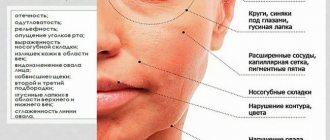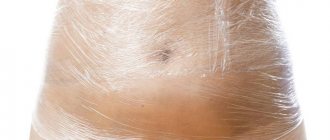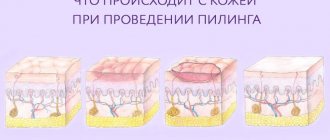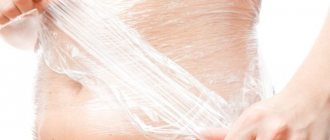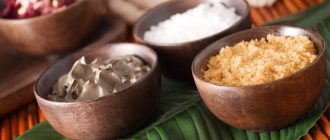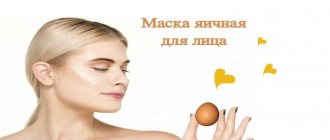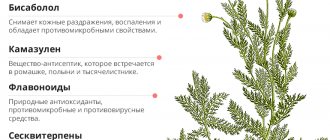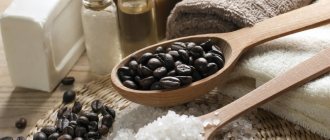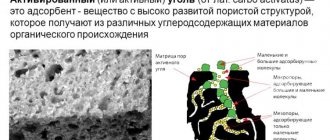Almost every representative of the fair half of humanity faces such a problem as cellulite (“orange peel”) - neither thin nor overweight women, neither young nor older women are immune from it. The word “cellulite” has become firmly entrenched in our colloquial language and the beauty industry in 1973
year, when the book of the same name by
Nicole Ronsard
, and
Vogue
published a review of it.
Since then, the era of anti-cellulite creams, massages and brushes began. But in fact, in medicine, the word cellulitis
means not just bumps and bumps on the skin, but an inflammatory disease in which damaged fat cells infect microorganisms and it does not occur so often.
The common aesthetic problem is actually nothing more than “gynoid lipodystrophy”
and is not listed in any International Classification of Diseases (ICD). The difference between true cellulite and “orange peel” is that in the first case there is an acute disturbance of blood flow, tissue morphology and a biopsy may be required to assess how dangerous the disease is.
In this article we will tell you how to get rid of cellulite if it is an aesthetic problem and not a disease.
In a broad sense, cellulite refers to an ordinary change in the structure of adipose tissue, which causes the characteristic unevenness and bumpiness of the skin. In this case, fat cells accumulate and grow under a thin layer of skin, connective tissue loses elasticity, and blood and lymph flow deteriorate.
Conventionally, several stages of lipodystrophy can be distinguished. On the first, there is no noticeable cellulite yet, but the skin loses its elasticity. The fat layer increases, not only due to the accumulation of fat cells (adipocytes), but due to swelling and impaired lymph flow. Irregularities on the skin are visible only when it is compressed in the areas of “fat traps”. If the problem is not caused by hormonal disorders, then in this case diet and fitness are still effective against cellulite. Gradually, the problem worsens - the bumps on the skin become more noticeable, the fat layer and swelling increase and it becomes more and more difficult to get rid of it.
Cause of cellulite
The cells that are found in the deepest layer of the skin (hypodermis) are called adipocytes. They form adipose tissue and connect the skin to the deep tissues of the body. Such fat cells, when they increase in size, form tubercles and bulges on the body.
An increase in fat cells, weakening of connective tissue, disruption of microcirculation in the subcutaneous layers of the body - all this leads to the appearance of gynoid lipodystrophy.
The causes of cellulite formation are:
· hormonal disorders (puberty, pregnancy)
· genetic factors (hereditary predisposition)
· changes in metabolism
Weight changes (obesity or weight loss, sudden weight changes)
· age (post-puberty)
· lifestyle, disruption of sleep and rest patterns, wearing tight clothes and high-heeled shoes
poor diet, insufficient water intake
· bad habits (drinking alcohol, smoking)
psychological disorders associated with stress, nervous overload
Lack of regular physical activity (low mobility, lack of gymnastics and daily walking)
Also, various diseases can contribute to the appearance of cellulite, such as varicose veins, diabetes mellitus, hypothyroidism, thyroid dysfunction, pancreatic dysfunction, diseases associated with renal failure, and others.
Stages of cellulite development
There are 4 stages of development of gynoid lipodystrophy:
Stage 1 cellulite
. Pre-cellulite or “soft cellulite”.
The first stage is characterized by slight swelling of the tissues, decreased sensitivity of the skin, an increase in the volume of the hips and other problem areas of the body. The skin is even and smooth, but when the skin is compressed, faint bumps are noticeable. Externally, the changes are invisible on the body or very weakly expressed. Typically, at this stage, skin injuries such as scrapes or bruises heal more slowly than usual.
Stage 2 cellulite
. Initial.
The orange peel effect occurs when muscle tension occurs, as well as when your hand squeezes the skin into a fold. The skin becomes less elastic. The swelling intensifies, the accumulated fluid compresses the veins, thereby disrupting the outflow process.
Stage 3 cellulite
. Micronodular or “hard cellulite”.
Fat cells join together to form “clusters.” Cell walls become rough. This stage is characterized by severe tissue swelling. The lumpy effect occurs without skin compression and without muscle tension of the tissue. The skin is pale. When pressing, small nodes are felt. The accumulated fluid blocks blood vessels (veins and small arteries), connective tissue develops, which looks like a honeycomb, weak blood vessels burst, bruises and spider veins form on the body.
Stage 4 cellulite
. Macronodular or nodular.
Changes in the skin are most pronounced: nodes and bumps are clearly noticeable without external manipulation or squeezing the skin, and they may be painful. Pits and depressions appear on the body. Against the background of stagnation of lymph and due to impaired blood flow, pronounced swelling appears.
Stage four cellulite is rare and requires treatment. Self-medication and home treatments are not recommended; consultation with a specialist is required.
Contraindications
The procedure does not cause dilation of blood vessels and capillaries, therefore it does not harm varicose veins or skin problems.
Contraindications are:
- pregnancy. The increased load on internal organs can negatively affect the condition of the mother and fetus;
- liver failure, liver diseases. Typically, toxins are eliminated through the liver, which increases the load on this organ;
- renal failure, chronic pyelonephritis. Some of the waste is excreted through the kidneys, which can also aggravate the problems of these organs;
- fibroids, endometritis, endometriosis;
- cystitis (inflammation of the bladder).
You can’t do a cold cellulite wrap for wounds, abrasions, or if you have skin diseases. It is forbidden to wrap the gluteal area and abdomen if you have problems with the stomach or intestines.
The results of such procedures become noticeable within a few days. But to achieve a lasting effect, you will need to carry out 10 - 12 procedures at intervals of 2 - 3 days. That is, the course of treatment at home lasts for a month. For preventive purposes, it is recommended to carry out 1 – 2 procedures per month.
Forms of cellulite
Depending on the clinical manifestations, it is customary to distinguish several forms of cellulite:
— hard cellulite
This type of cellulite is typical for young girls, as well as for muscular women with regular physical activity and active sports. Cellulite appears when the skin is compressed into a fold, the tissue is dense, and stretch marks appear on the body in most cases.
- flaccid cellulite
Flaccid cellulite, on the contrary, is typical for women leading an inactive, sedentary lifestyle. Muscle tone is reduced, the skin is flabby. Often this form of cellulite appears due to a sharp decrease in body weight, as well as after the age of 40 years.
— edematous cellulite
One of the severe but rare forms of cellulite, it is characterized by swelling and an increase in the volume of the lower extremities. The skin is thin and pale, there are painful symptoms and a feeling of heaviness in the lower extremities. When you press on the problem area, a trace of pressure is left in the form of a depression.
— mixed cellulite
This form combines the characteristics of different types of cellulite.
Some classifications also distinguish such forms as:
· natural form of cellulite
(due to genetic and physiological reasons, occurs in many women, including thin, slender women; visually invisible, does not cause discomfort)
· fat cellulite
(the form is caused by low physical activity and poor nutrition with frequent consumption of high-calorie fatty foods; consumed calories are not consumed, fat cells increase in size)
Let us consider individual cases of signs of cellulite in women during pregnancy.
Dietetics
First of all, you need to learn how to eat properly. This does not mean that you need to try every diet in a row. After all, any diet is a restriction on the intake of any vital elements into the body. If the body does not receive enough of them constantly, serious diseases will begin to develop. In addition, the psychological factor will play a role: when a person limits himself in something for a long time, then after some time he will definitely break down and begin to make up for lost time.
Eating right means eating a varied diet that is beneficial for the body and at the same time every day.
Often, it is impossible to do without the help of doctors when creating a competent diet. When drawing up individual balanced nutrition programs, specialists carefully calculate the calorie content and content of essential nutrients in the diet, taking care primarily of their balance.
It is necessary to eat regularly - at the same hours, which are convenient for each individual person to eat. It is very important. If you get used to eating regularly, then at the set time the gastric juice will be most actively released and the best conditions will arise for digesting food.
Don’t forget about maintaining energy balance. In other words, the correspondence of the energy value and calorie content of the diet to individual energy expenditure. For example, if a woman is between 20 and 30 years old and she leads a mostly sedentary lifestyle due to work or other reasons, then she should consume no more than 2,000 calories daily. And if a woman has average activity, then her daily norm is 2200 calories.
Ladies 50+ should be very careful in the amount of daily calorie intake. If they lead a sedentary lifestyle, then the daily calorie intake should not exceed 1600. But for those who continue to lead a very active lifestyle despite the years, the daily calorie intake can reach 2000.
Men can eat a little more calories, but not by much. For example, at the ages of 31 to 50 years, the daily calorie intake should be as follows: for sedentary people - up to 2200; medium mobile - up to 2600; very active - up to 2800 calories.
Features of the manifestation of gynoid lipodystrophy in pregnant women
During pregnancy, a woman's body undergoes a number of changes. Thus, expectant mothers are characterized by weight gain, which is a normal physiological process. Due to the accumulation of fat under the skin and stretching of the connective fibers, cellulite appears in a pregnant woman.
The main reasons for the appearance of cellulite during pregnancy are the following factors:
· accumulation of fatty deposits in cells, which is provided for by physiology, because fat is the main source of energy necessary for the full development of the fetus.
· disturbance of water balance in the body. The kidneys are overloaded, the blood and lymphatic vessels are under stress from the fetus, the result is water stagnation and fluid accumulation in the tissues.
· limited physical activity. In the third trimester of pregnancy, leading an active lifestyle becomes difficult; the expectant mother spends a lot of time at rest.
· changes in diet. During pregnancy, the feeling of hunger increases, taste preferences change, and the feeling of satiety weakens.
· hormonal changes in the body. Metabolic processes in the body are disrupted, oxygen saturation of tissues deteriorates, the pregnant body experiences a deficiency of nutrients - all this leads to changes in the skin.
As a rule, after the birth of a child, the body recovers over time, but the problem should not be left unattended throughout pregnancy. Proper nutrition, loose clothing, moderate physical activity, iodine and other important microelements will help prevent the appearance of cellulite.
Cellulite treatment
It is not easy to completely get rid of cellulite and stop its development; this applies to any age-related changes in the body. It is important to prevent the development of lipodystrophy from the initial stages to the last. But it is still possible to cope with this. Cellulite problems are completely solvable.
Today, the field of cosmetology offers a wide range of services aimed at combating cellulite. Let's look at them in more detail, but let's start with a less conservative and surgical method of getting rid of gynoid lipodystrophy - liposuction.
You might be interested
Facelift without surgery? It's real.
Time dictates its own laws. Today, those who look well-groomed and young achieve success. The well-known proverb “You are greeted by your clothes” can be supplemented – and by your face too! But what to do if age takes its toll?
Liposuction.
Liposuction is a cosmetic surgery that involves surgically removing fat deposits.
When considering a method of getting rid of cellulite and excess fat, such as liposuction, it is worth remembering that most surgical operations are accompanied by significant trauma, the possible appearance of hematomas, a long postoperative period and prolonged pain. After the operation, it is necessary to wear a bandage; removing it ahead of time can lead to scarring.
Liposuction is performed on a problem area (or several areas at once), as a result, the figure visually acquires a more attractive appearance.
It must be remembered that liposuction does not cure obesity, since the operation does not affect the causes of the disease. After the liposuction procedure, a postoperative recovery period is highly recommended, followed by strict adherence to a proper balanced diet and an active lifestyle, including moderate physical activity (gymnastics, swimming, walking, etc.).
Rules
Traditional medicine offers many recipes, the main components of which are clay (usually blue), vinegar, honey, aromatic or cooling ingredients.
First you need to take a warm shower and clean the surface of your body with a scrub. Cool the paste before applying and then wrap it in cellophane film. There is no need to wrap yourself in a warm blanket; your body should feel cool.
To make lubrication easier, you can lightly moisten your hands. After removing the cellophane, rinse your body in the shower and apply a moisturizer or anti-cellulite cream.
Cosmetological methods for treating cellulite
Modern cosmetology clinics offer the following methods of combating cellulite: pressotherapy, wraps, vacuum roller massage, manual anti-cellulite massage, lipolytic injections.
Pressotherapy
Pressotherapy or pneumomassage is a procedure that involves the use of compressed air. During the session, a special suit and special cosmetology equipment are used, supplying compressed air of the required pressure, temperature and intensity (adjusted individually for each patient depending on various factors).
There are no painful sensations during the procedure; on the contrary, the muscles relax and heat spreads throughout the body.
In addition to getting rid of cellulite, the procedure is used to treat varicose veins and get rid of edema, because it is effective for strengthening the walls of blood vessels and normalizing blood flow.
How it works?
When the circulatory and lymphatic systems are disrupted, fluid, toxins, and cell breakdown products accumulate in the body. Stimulation of blood circulation and lymph outflow helps remove unnecessary components and accumulated fluid from subcutaneous fat. The outflow of lymph and intercellular fluid improves, blood flow increases, thereby improving the supply of oxygen and other valuable components of the body’s structures.
The result after a full course of pressotherapy procedures (10-25 procedures, prescribed by a specialist based on various factors):
· removal of aesthetic imperfections of the skin (a pronounced cosmetic effect is noticeable after 3-4 sessions: reduction in volume, increase in skin tone; visible signs of cellulite disappear)
· weight loss
reduction of swelling or complete elimination of it
· slowing down the aging process
· increased energy, improved mood
· increased immunity
· prevention of varicose veins and blood clots
Wrap
Wrapping is a cosmetic procedure that is carried out for the purpose of body skin care, figure correction and cellulite treatment, which involves applying specialized compounds to the surface of the skin that affect microcirculation, lymph flow and metabolism. During the wrapping procedure, breathable films or a thermal blanket are used, which is necessary to warm the tissues.
Specialized mixtures applied to problem areas of the skin may be based on sea and ocean algae, sea water (contains more than 100 different sea salts), therapeutic muds, clays (for example, blue or black), sea salt, essential oils, and herbs.
Ocean algae, for example, activate cell metabolism, remove toxins and stagnant fluid from the body, and sea water normalizes water-salt metabolism in the body and improves metabolism.
How it works?
With the help of wrapping, beneficial and active ingredients are transported into the skin cells. The warming effect created with the help of special means (thermal blanket, breathable film) prevents the evaporation of active substances and promotes their maximum penetration into tissues. The active composition penetrates into skin cells through hair follicles, sweat and sebaceous glands, is absorbed into the capillaries of the skin, and then enters the bloodstream.
There are two types of wraps - hot and cold.
Using a hot wrap, high-temperature formulations are applied to problem areas of the skin. As a result of heating the skin, blood vessels dilate, blood flow enriched with oxygen and nutrients is stimulated; pores open, through which toxic substances and fat are removed.
Cold wrap is carried out using a composition at room temperature (from 15 degrees). Such a wrap, on the contrary, constricts blood vessels, as a result of which blood and lymph flow increase and metabolism is activated. Cold wraps include oil wraps, honey wraps, chocolate wraps and seaweed wraps.
Result after a full course of wrapping procedures (8-15 sessions, depending on the specialist’s prescription):
· strengthening the skin, increasing its tone
· getting rid of visible signs of cellulite (eliminating the orange peel effect)
· evens out skin tone, improves color
· improvement of blood circulation and metabolic processes of the body
· elimination of edema
· nutrition of the skin with useful and nutritious substances
Vacuum roller massage
Vacuum roller massage or LPG massage is one of the types of cosmetic massage, which is carried out using special devices that exert vacuum and mechanical effects on the skin in order to improve blood and lymph flow and activate intercellular metabolism. In addition, vacuum roller massage affects all subcutaneous fat cells and especially important cells that maintain youthful skin and produce collagen - fibroblasts. Therefore, in addition to combating cellulite, this method is also highly effective in achieving goals such as increasing the elasticity and firmness of the skin.
How it works?
The effect on the skin is carried out using a vacuum attachment called a manipulator. At its end, an environment with rarefied air is created, thanks to which the skin is easily retracted, and inside the nozzle there are rollers that move in a certain sequence. The rarefied environment has a pulsating effect, the rollers act on the skin mechanically, resulting in a massage of both the skin and subcutaneous fat cells; the removal of excess fluid from the body is ensured, blood flow is improved, tissues are supplied with oxygen, metabolism is improved, and fat deposits are eliminated.
There are no discomforts during the procedure.
The result after a full course of vacuum roller massage procedures (15-20 sessions, the duration of the course is determined by a specialist):
· elimination of fat deposits (“fat traps” that do not respond to training and various diets)
reduction of body volume
· weight loss
· getting rid of cellulite
· elimination of edema
· evens out skin tone, improves color
Increased skin elasticity and firmness
· modeling facial contours (vacuum roller massage is also used for the face), smoothing wrinkles, increasing skin elasticity
Improved blood circulation and lymph flow
Elimination of heaviness in the legs
· prevention of varicose veins
Manual anti-cellulite massage
Manual anti-cellulite massage is a procedure that represents a mechanical effect on problem areas of the skin with pronounced signs of cellulite. Also, a light rhythmic effect is applied to the areas where the lymph nodes are located. Anti-cellulite massage is aimed at activating metabolism in the subcutaneous fat layer, improving blood circulation and lymph flow.
Achieving the desired result and the high efficiency of this method depend on two main components - the technique and professionalism of the specialist performing the procedure. It is very important to contact exclusively professionals who not only master all kinds of massage techniques, but also know human anatomy (you need to know the location of lymph nodes and blood vessels). After completing a massage course with a good experienced specialist, you will really get the desired result without harming your health.
How it works?
Manual anti-cellulite massage promotes the supply of oxygen to the subcutaneous fat layer, which improves lymph flow and blood flow. In the process of mechanical action on the skin, the integrity of the cell that retains fat is disrupted, the temperature in the tissues rises, foci of cellulite and fat deposits are broken down, become less solid and are removed from the body with excess fluid and waste products.
The effect is achieved by improving lymph flow and blood flow to problem areas, increasing the flow of oxygen to cells, activating the process of collagen fiber production, and improving the functioning of the sebaceous glands, which promote the rapid release of broken down fat.
The result after completing a full course of manual anti-cellulite massage (the duration of the course is determined by a specialist):
Increased skin elasticity and firmness
· removal of toxins
·improved blood supply
Reduction of fat deposits in problem areas
Reduction of swelling or its complete elimination
· getting rid of cellulite
Lipolytic injections
Lipolytic injections or injection lipolysis are injections of special drugs for the purpose of losing weight and getting rid of cellulite, which are administered subcutaneously into problem areas of the skin (both body and face).
Lipolytic is a drug based on natural substances that can break down fat deposits and is widely used in cosmetology for the treatment of cellulite, correction of figure and facial proportions.
Injection lipolysis
– one of the most effective, modern, safe and therefore highly sought after procedures in cosmetology. This treatment method is a natural physiological process of breaking down fats and removing them from the body naturally. Surprisingly, this has become possible - quick and effective removal of excess fat without heavy physical activity, grueling diets and surgeries.
How it works?
Using a thin needle or a special very thin tube (cannula), the drug is injected into a certain area, under its influence the process of lipolysis begins - the breakdown of adipose tissue into its components. Lipolytic preparations contain substances that can dissolve fat cells into fatty acids, and then remove dissolved fats using the circulatory and lymphatic systems. To speed up the process and prevent the return of dissolved fat to its previous state, special substances are added to lipolytics that accelerate the microcirculation process.
The procedure does not require anesthesia, is well tolerated, lasts about 15 minutes and usually requires only 2-4 visits to a specialist
. On average, three to four injections are necessary, this is enough to evenly distribute the substance over the desired area.
Absolute and proven safety and high efficiency have made injection lipolysis one of the most popular procedures in modern cosmetology.
Lipolysis has a number of undeniable advantages, first of all, it is maximum safety, quick results, which are obvious after 1-3 sessions and minimal rehabilitation time (minor swelling that goes away after 1-2 days, exclusion of saunas, steam baths, alcohol and physical activity for several days).
Results after completing a full course of lipolytic injections (1-5 sessions with a break of 8-21 days and the duration of the course is determined by a specialist):
· volume reduction
Improved contours
Improvement of skin condition (elasticity, firmness, firmness)
· getting rid of cellulite
Reduction of body fat by 5-6 cm
Correction of facial contours, including getting rid of a double chin
Any of the above salon methods for treating cellulite has limitations and contraindications, so consultation with a specialist is necessary.
Wrap procedure
In all cases, the wrapping procedure follows the same analogy.
Skin preparation
Before starting the procedure, you should cleanse the skin with a scrub; this will allow nutrients and components to penetrate the skin faster, and the effect expected from the wrap will occur much faster.
Wrapping process
Typically, any mixture or solution is applied in a thick, generous layer, and then wrapped in film (you can use food film).
On average, this procedure takes 20-30 minutes, but there are also so-called maxi wraps that are good to do at night.
